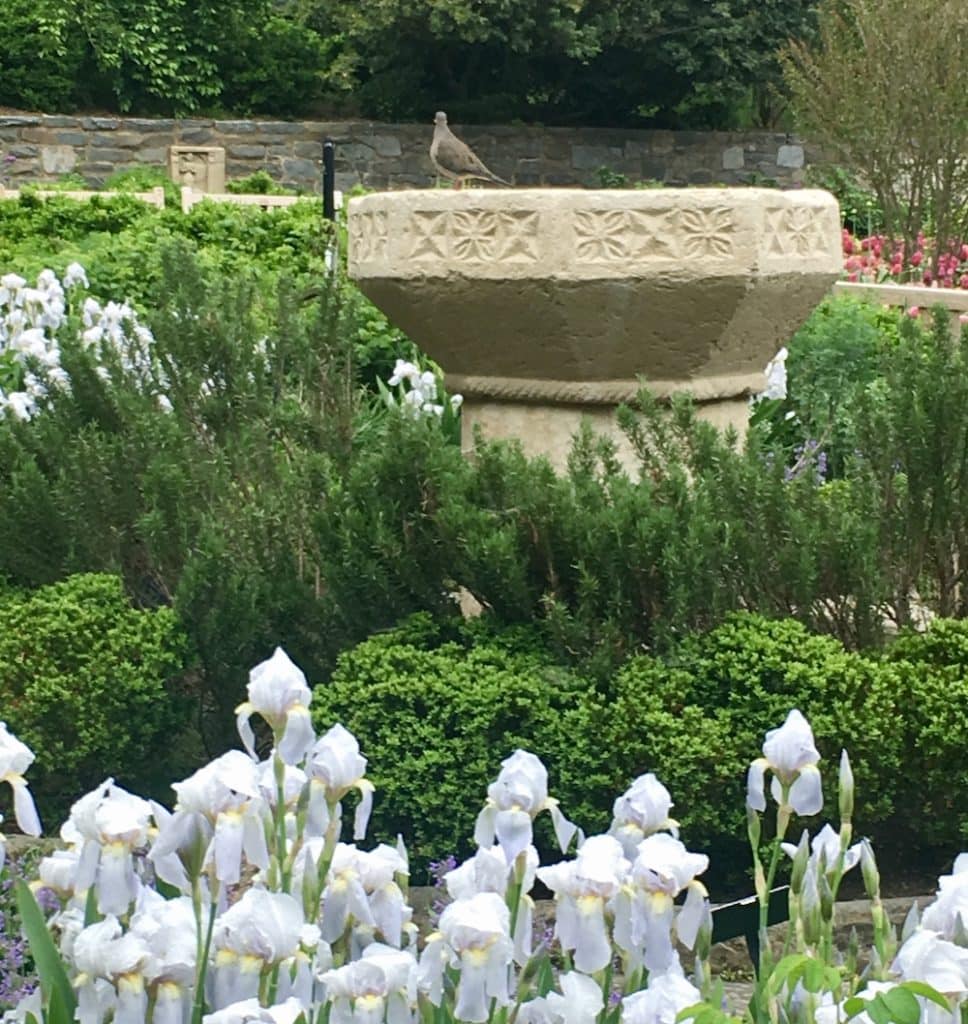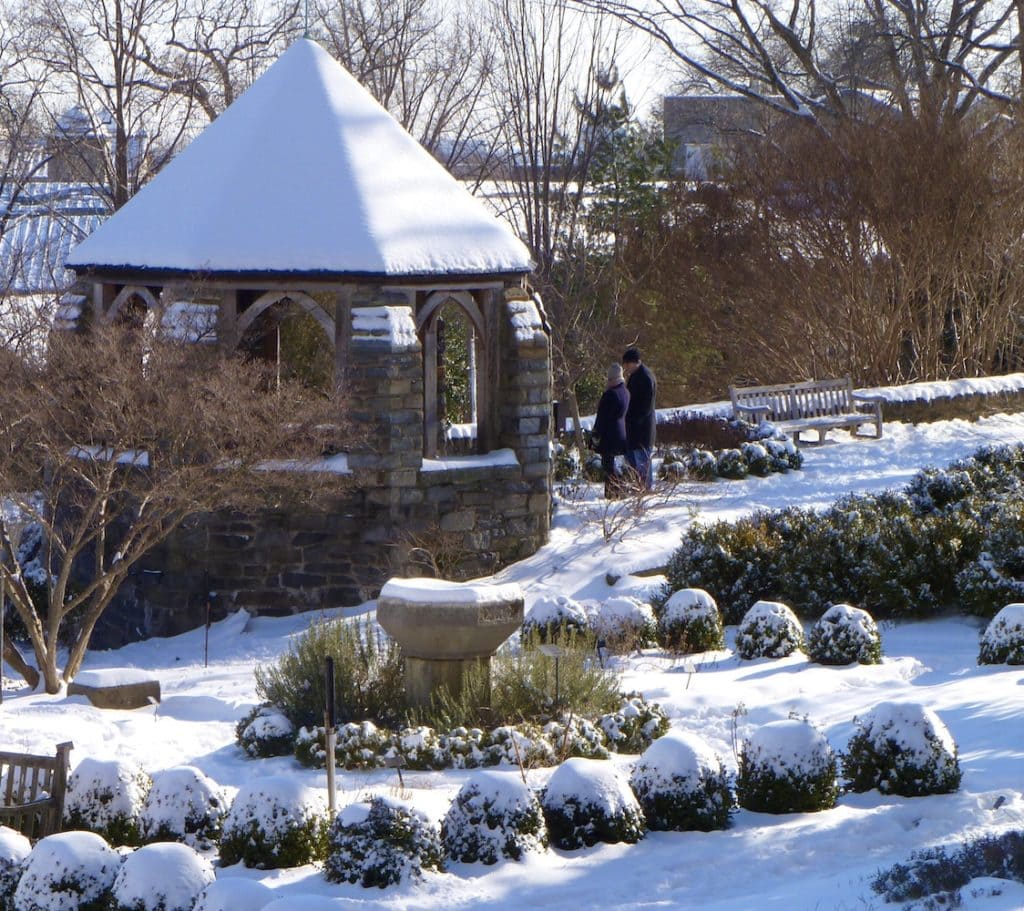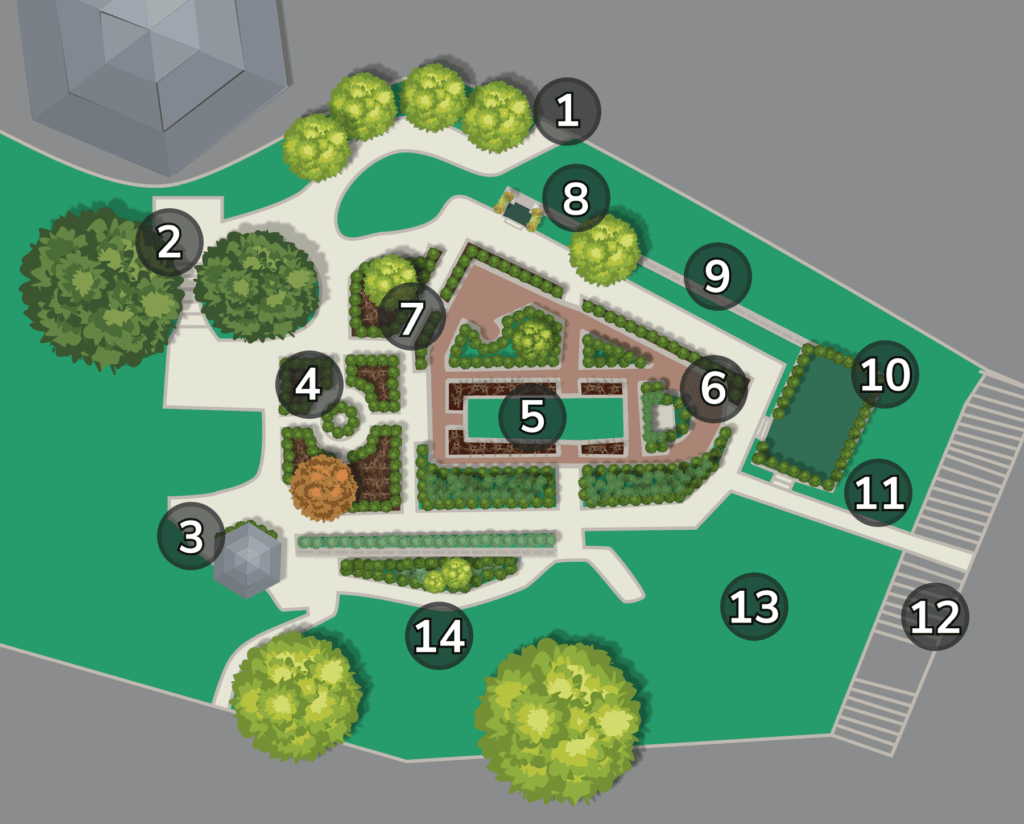
No. 4 On The Map:
The Hortulus
This small garden room – called the Hortulus or “little garden” – is anchored firmly in the 9th century by the medieval baptismal font at its center. The raised geometric beds encircling the font are planted with the same herbs and flowers that would have been found in monastery kitchen and infirmary gardens during the 9th century.
In his poem entitle “Hortulus”, written in 849 A.D., Abbot Walahfrid Strabo describes how some of the plants included in this little garden would have been used during his time. The Emperor Charlemagne’s list of plants (812 A.D.) also served as a source for plant material in the Hortulus. All Hallows Guild arranged to revive and augment the herbs and boxwood in 2014 and 2015.
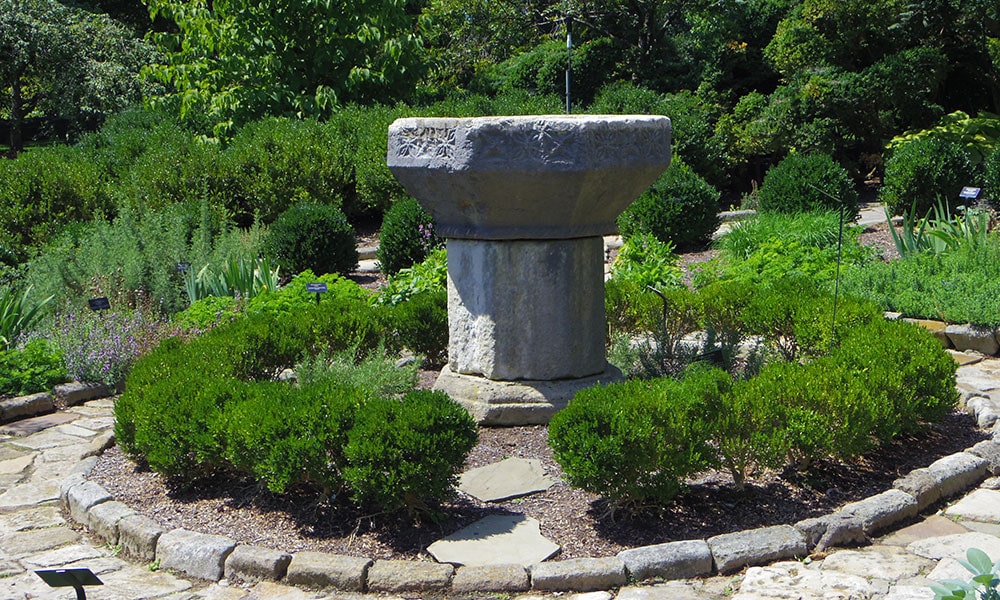
The Carolingian Font in the Hortulus is attributed to the time of Charlemagne and is reported to have come from the Abbey of St. Julie in the Aisne. The top is marble and the pedestal is Caen limestone. The font came from the collection of George Grey Barnard. Barnard was a sculptor and art collector whose private medieval and Gothic art collection was integral to the formation of the Cloisters of the Metropolitan Museum of Art in New York. Mrs. Henry Hudson Barton, Jr., of Philadelphia, provided the funds for the acquisition of the font, and it was installed in the garden in memory of her husband.
In 2018 All Hallows Guild engaged conservation professionals from McKay Lodge Art Conservation Laboratory to perform preservation work on the font along with several other medieval artifacts in the Bishop’s Garden.
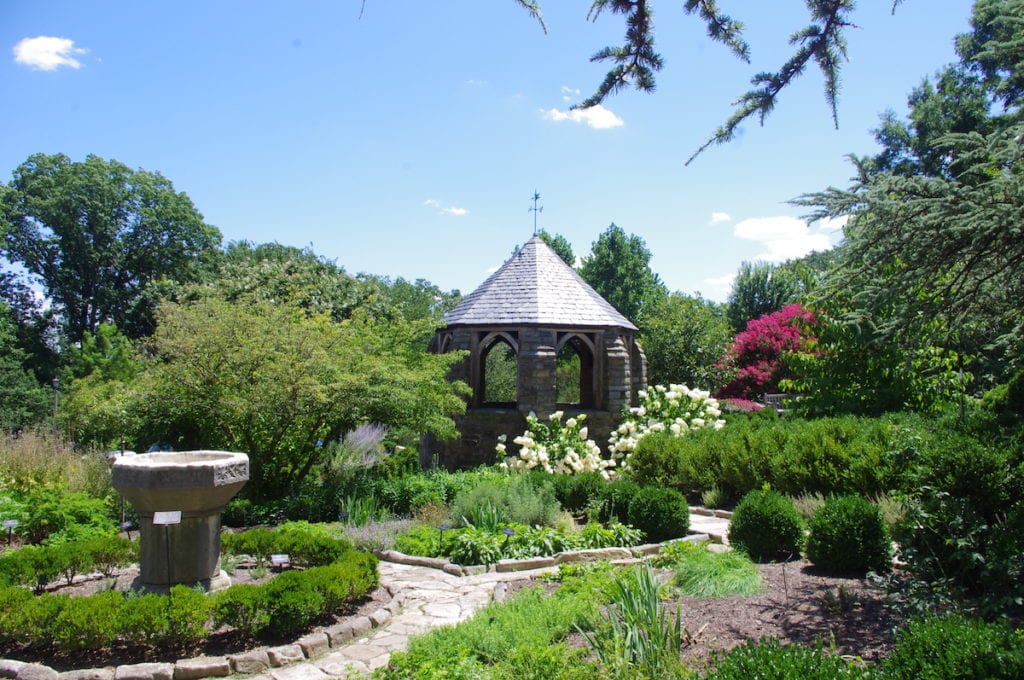
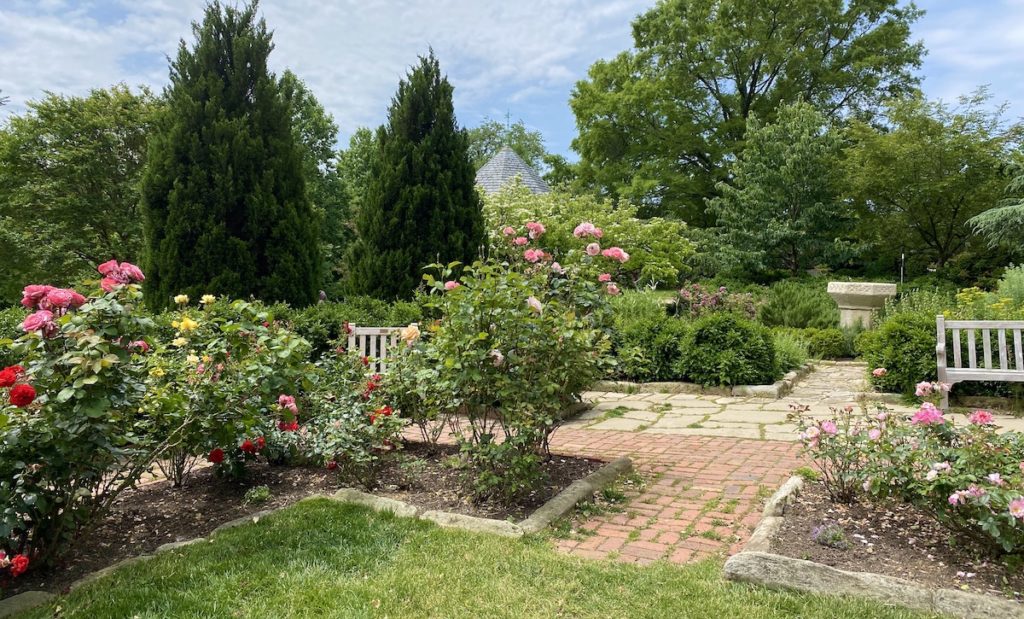
As you leave the Hortulus, walk to the adjacent rectangular lawn that forms the center of the Rose Garden. There the stone walkway changes to brick.
Help Us Keep the Gardens Growing
Partner with us to ensure that the 57 acres of gardens and grounds surrounding Washington National Cathedral continue to be a haven of peace and refreshment in the midst of the Nation’s Capital.


